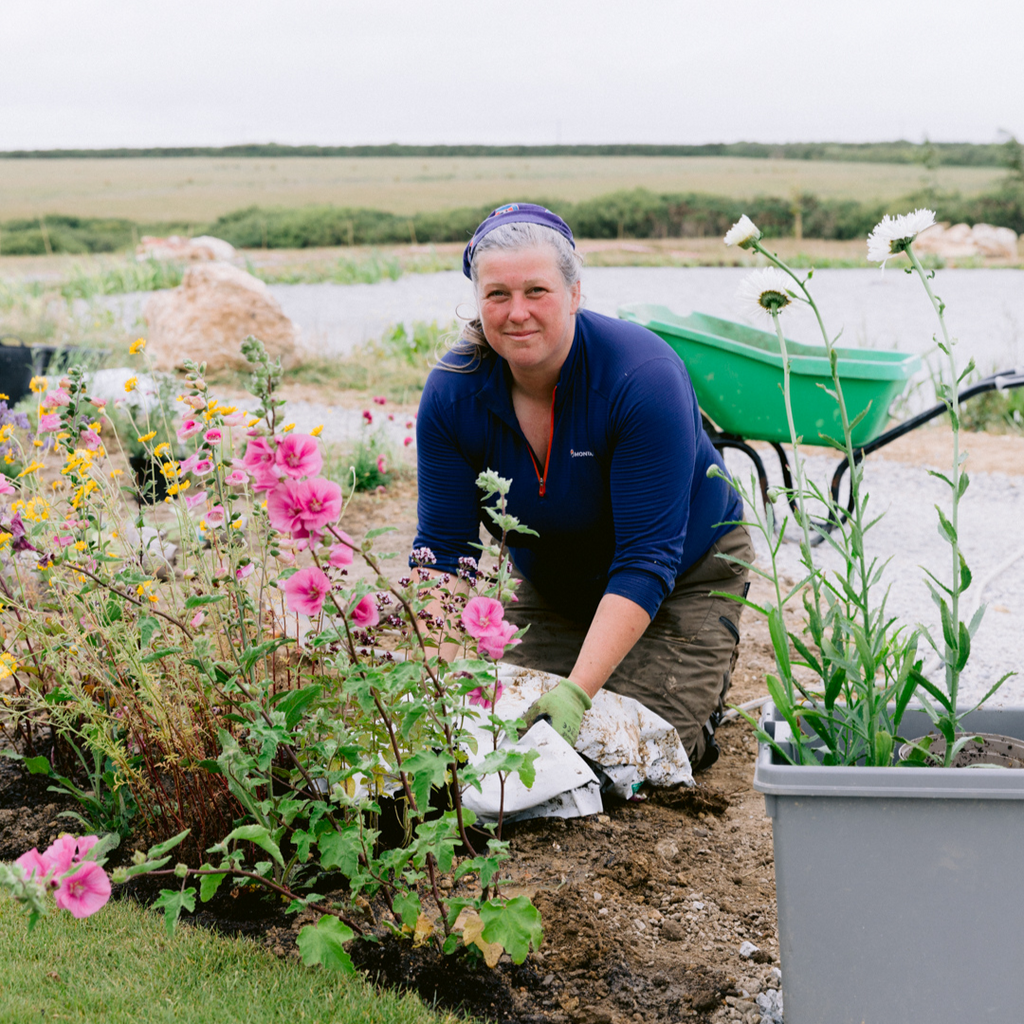Happy Habitats at St. Eval

Last June we were delighted to unveil our brand new pond area, and wildlife haven here on our farm at St. Eval. This space was created in partnership with amazing local companies to ensure that only native or non-invasive species of flora were planted to encourage biodiversity in the area whilst also maintaining and protecting it.
Happy Habitats, a local Cornish company specialising in habitat management, worked with us to create a unique area full of specially selected species, and their exceptional knowledge and enthusiasm for the project blew us away.
We sat down with Angie Cruse, one of Happy Habitat's directors, to learn more about her passion for the environment and the special work she did here at St. Eval.
Please tell us a bit about Happy Habitats, who are you and what do you do?
Our main objective is to carry out work within the natural environment to enhance biodiversity: creation, restoration and management. We mostly work in woodlands, wetlands and grasslands to improve the habitat for wildlife and to increase the richness of species. In a woodlands for example, selectively felling trees helps increase light levels for the benefit of others and promotes regeneration for age diversity, allowing ground flora to flourish, along with lichens and many species associated with trees. We carry out the restoration of wetlands, whether clearing scrub, blocking man made ditches, and tree work for the re-naturalisation of freshwater habitats.
Where did your love for the environment originate?

I grew up in the sea here in Cornwall but fell in love with nature on land when researching ethical experiences in nature. I was inspired on expeditions in Arctic Norway, and mesmerised whilst looking into the eyes of a humpback whale from the shoreline of deep fjords. Also in the Carpathian forests in Romania, trekking in our very own European bear country and volunteering in Zarnesti’s mountain sanctuary. This is where I learnt about the self perpetuating habitats of natural virgin forests which we have sadly lost here in the UK. Happy Habitats started when I met our senior Arboricultural Consultant Nigel in 2016; his long term expertise in trees and the environment and my love of nature inspired me to re-train. Together, we started Happy Habitats and we also bought our own woodland to showcase what can be achieved.
We’d love to know more detail about some of the species of flower and tree that you planted here at St. Eval, how did you decide to plant these specific types?

The trees planted at St. Eval have been chosen primarily for their value to wildlife, whilst considering the windy site and inland coastal conditions. Most trees are native to the UK, whilst the Crimean limes were chosen with their durability in mind but also to show solidarity with Ukraine.
Regarding wildflowers and trees, most of the time we are thinking of pollinators which is really great but our native vegetation is more than just pollen/nectar. All these species have associated invertebrates that also use them as food plants. Especially in their larval form such as butterflies, moths, beetles and bugs. Many species can rely on just one or a few types of plant. Many also feed birds and mammals with their lovely Autumn/Winter interest, berries and seeds. Species of flowering plant have been chosen with this in mind and for the soil type and coastal conditions. One bed that leads from the more formal factory lawns has a few extra variants of these species, purely as we wanted something more established with a more immediate effect.
Do you have any tips for people looking to make their gardens at home more wildlife friendly?

Dig ponds! They are the best ecology lesson ever, watching it reach its equilibrium. Build it/dig it and they will come! Add log piles in the corners of gardens, or around ponds, as deadwood is shelter and great for new life whilst important for species to lay eggs etc. Additionally, there is always space for a meadow, no matter how small. There is a happy medium between neat tidy gardens and being wildlife friendly. After all, some of our aquatic plants are the most beautiful, wildflowers in the wild and native colourful trees and shrubs offer both spring and autumn interest for both us and wildlife. A garden is best enjoyed when encountering other species enjoying it too!
We'd like to thank Happy Habitats for the outstanding work they've put in helping us create our wildlife area, and Angie for answering our questions and sharing her love of the environment.
We hope that Angie's tips inspire you to work some magic on your own outdoors spaces! We'd love to see how you're creating a home for wildlife, share with us on socials @stevalcandles, or via email to marketing@st-eval.com.
#StEval #HappyHabitats